| Family |
Species |
Author |
Info |
Occurrence |
Common names |
Abundance |
Max length |
Maturity |
Remark |
Photo |
| Gobiidae |
Gymnogobius castaneus
|
(O'Shaughnessy, 1875) | Fr, Br, M
| native | | | 8.00 cm TL male/unsexed | | Reported from southern Sakhalin I. (Ref. 37812, 81467). nEurRus | 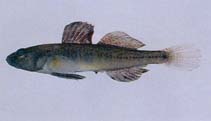 |
| Gobiidae |
Gymnogobius macrognathos
|
(Bleeker, 1860) | Fr, Br, M
| native | большеротый бычок (Russian) | scarce (very unlikely) | 15.70 cm TL male/unsexed | | Occurs in Peter the Great Bay and rarely in Primor'e (Ref. 26334). Type locality: Peter the Great Bay, Sea of Japan, Russia (Ref. 26282). Enters the lower reaches of the Suchan R. (Ref. 2058). Also Ref. 27683. nEurRus | 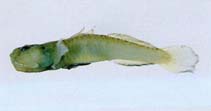 |
| Gobiidae |
Gymnogobius opperiens
|
Stevenson, 2002 | Fr
| native | | | 8.05 cm SL male/unsexed | | Found in the southern Sakhalin, and southern Primorski Krai (Ref. 81467). nEurRus |  |
| Gobiidae |
Gymnogobius petschiliensis
|
(Rendahl, 1924) | Fr, Br
| questionable | | | 8.00 cm SL male/unsexed | | Report in Sakhalin (Ref. 58299) is questionable (Ref. 81467). nEurRus | No picture yet. |
| Gobiidae |
Gymnogobius taranetzi
|
(Pinchuk, 1978) | Fr, Br, M
| native | | | 8.30 cm SL male/unsexed | | Occurs in the Amur estuary, in the Artemovka River, in Khasan and Ryazanoskoe lakes, and in Peter the Great Bay (Ref. 26334). Also Ref. 53210. nEurRus | No picture yet. |
| Gobiidae |
Gymnogobius urotaenia
|
(Hilgendorf, 1879) | Fr, Br
| native | пресноводный дальневосточный бычок (Russian) | | 14.00 cm TL male/unsexed | | Known from southern Sakhalin (Ref. 37812, 81467), in the lower reaches of the Solo'evka, Susun and Tret'ya which is a tributary of the Taranai River (Ref. 26334); and from the basins of the Poronai and Tym' Rivers (Ref. 27681). nEurRus | 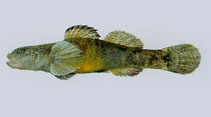 |
| Gobionidae |
Hemibarbus labeo
|
(Pallas, 1776) | Fr
| native | Kon' (Russian), Usach gubastyi (Russian), Amur barbel (English), Skin-carp (English), Steed (English), конь-губарь (Russian) | | 67.00 cm TL male/unsexed | | Known throughout the Amur basin from the upper to the lower reaches, including the Sungari, Ussuri, and Lake Khanka (Ref. 1441); and Sakhalin (Ref. 37812). Also Ref. 26334. nEurRus | 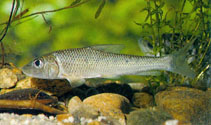 |
| Gobionidae |
Hemibarbus maculatus
|
Bleeker, 1871 | Fr, Fi
| native | Spotted barbel (English), пятнистый конь (Russian) | | 47.00 cm TL male/unsexed ;34.30 cm TL female | 20 TL | Known from the Ussuri River, Lake Khanka, and in the middle and lower reaches of the Amur (Ref. 26334). This has been translocated to some areas within the country unintentionally where it has locally established self-sustaining populations (Ref. 45022). Introduced elsewhere in Russia (1739). Peak of spawning in Lake Khanka is in late May. Eggs are deposited near the shores. Also Ref. 1441, 13397. nEurRus | 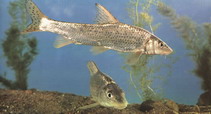 |
| Xenocyprididae |
Hemiculter leucisculus
|
(Basilewsky, 1855) | Fr
| native | Obyknovennaya vostrobryushka (Russian), Vostrobryushka (Russian), Common sawbelly (English), востробрюшка (Russian) | | 29.00 cm TL male/unsexed | 9.5 TL | Known from the Ussuri, River, Lake Khanka and the middle and lower reaches of the Amur basin (Ref. 26334). Also Ref. 1441. nEurRus |  |
| Xenocyprididae |
Hemiculter lucidus
|
(Dybowski, 1872) | Fr
| native | Vostrobryushka (russian), Sharpbelly (English), Ussuri sharpbelly (English), уссурийская востробрюшка (Russian) | | 25.00 cm SL male/unsexed | | Occurs in Ussuri river; very abundant in Lake Khanka in 1949. Also found throughout the Amur basin (Ref. 26334). nEurRus | No picture yet. |
| Salmonidae |
Hucho taimen
|
(Pallas, 1773) | Fr, Fi, Sp
| native | Taimen' obyknovennyi (Russian), Taimen (English), Taimen' (Russian), обыкновенный таймень (Russian), таймень (Russian) | | 200 cm SL male/unsexed | 64.5 FL | Known from rivers in the Urals and Siberia from the Kama to Indigirka (Ref. 26334). Also found in Lake Khanka drainage area (Amur river basin). This has been translocated to areas within the country for stocking in open waters, however, they failed to establish self-sustaining populations (Ref. 45022). Is an exclusively fluvial species, preferring swift-flowing rivers; never descends to the sea. In spring, it ascends rivers and enters shallow creeks. Spawns in May (Ref. 593). Almost extirpated in Pechora drainage (Ref. 59043). Also Ref. 45563. EurRus | 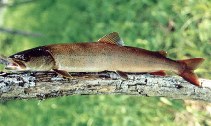 |
| Acipenseridae |
Huso dauricus
|
(Georgi, 1775) | Fr, Br, Fi, Pr
| native | Kaluga (Russian), Great Siberian sturgeon (English), калуга (Russian) | fairly common (chances are about 50%) | 560 cm TL male/unsexed | 180 | Distributed in the Amur basin from the estuary up to the Shilka, Argun and Onon Rivers (Ref. 593). Juveniles are found in the Sea of Okhotsk close to the Taui, Okhota, Ul'beya, Inya and other rivers (Ref. 26374). Largest fish in the Amur river basin, reaching 5.6 m in length, >1000 kg weight, and age of more than 80 years (Ref. 40142). Three populations residing in the Amur River are now endangered. As of 1997, the Zeya and Bureya population was so small that it was on the verge of disappearing (Ref. 40142). nEurRus |  |
| Acipenseridae |
Huso huso
|
(Linnaeus, 1758) | Fr, Br, M
| native | Белуга (Russian), Beluga (Russian), Kyrpy (Russian), белуга (Russian) | | 800 cm TL male/unsexed | | Distributed in the Black Sea and the Sea of Azov, but less than in the Caspian Sea.The main spawning grouand is the Volga. All spawning grounds are inaccessible for fish due to the presence of power station dams (Ref. 26334). Reported from Don (Ref. 58293) and Kuban River drainages (Ref. 58296). This has been translocated to areas within the country for aquaculture and stocking in open waters however, it failed to establish populations in areas where it has been transplanted to (Ref. 45022). Also Ref 3561. EurRus | 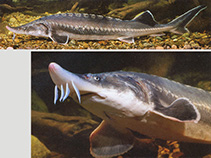 |
| Osmeridae |
Hypomesus japonicus
|
(Brevoort, 1856) | Fr, Br, M
| native | | | 25.00 cm TL male/unsexed | 9 TL | Known from Sakahlin (Ref. 37812) and Lake Bol'shoe, Bol'shoi Shantar Island (Ref. 54510). Anadromous (Ref. 37812). nEurRus |  |
| Osmeridae |
Hypomesus nipponensis
|
McAllister, 1963 | Fr, Br, M
| native | Корюшка малоротая японская (Russian), японская малоротая корюшка (Russian) | | 17.00 cm TL male/unsexed | | Occurs in Sakhalin (Ref. 37812). Recorded from the basins of the Poronai and Tym' Rivers (Ref. 27681). nEurRus |  |
| Osmeridae |
Hypomesus olidus
|
(Pallas, 1814) | Fr, Br, Fi
| native | Корюшка малоротая речная (Russian), Rechnaya malorotaya koryushka (Russian), Pond smelt (English), Malorotaya koryushka (Russian), корюшка малоротая речная (Russian), обыкновенная малоротая корюшка (Russian), огуречник (Russian), речная малоротая корюшка (Russian) | | 20.00 cm TL male/unsexed | | Found in freshened portions of seas, rivers and lakes: Alazeya, Chukoch'ya, Kolyma, Anadyr and Kamchatka (Ref. 593); including Lake Bol;shoe, Bol'shoi Shantar Island (Ref. 54510). Also found in Sakhalin (Ref. 37812). An anadromous species: the riverine freshwater form is found in the Amur River; the land-locked populations occur in some lakes; known from the Tym' River and Kolyma River (Ref. 26334). Also Ref. 559, 27547, 43202, 96339. nEurRus | 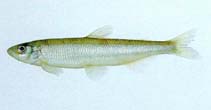 |
| Xenocyprididae |
Hypophthalmichthys molitrix
|
(Valenciennes, 1844) | Fr, Fi, Aq
| native | Толстолобик белый (Russian), Belyi tolstolob (Russian), Tolpyga (Russian), Chinese schemer (English), Silver carp (English), Tolstolobik (Russian), белый толстолобик (Russian), толстолобик (Russian) | | 120 cm TL male/unsexed | | Found in the Lake Khanka drainage area (Amur river basin). Introduced from the Amur (Siberia) to the European Russia (Ref. 59043). This has been translocated to areas (such as Don, Volga, Sakhalin Island) within the country for aquaculture and stocking in open water. However, it failed to establish populations in areas where it has been transplanted to as reported in 2002 (Ref. 45022). But earlier reports indicated that self-supporting populations existed in the Kuban, Terek, and in some other rivers (Ref. 26334). Native wild stocks are declining (Ref. 59043). EurRus |  |
| Xenocyprididae |
Hypophthalmichthys nobilis
|
(Richardson, 1845) | Fr, Aq, Rstr
| introduced | Толстолобик пестрый (Russian), Pestryi tolstolob (Russian), Bighead (English), пестрый толстолобик (Russian), толстолоб пестрый (Russian) | | 146 cm SL male/unsexed | | This has been introduced to areas within the country for aquaculture and stocking in open waters. However, it failed to establish self-sustaining populations (Ref. 45022). Introduced to the Amur basin (Ref. 13397, 26334). Its natural reproduction is recorded in the Terek as well as in the Kuban and some other rivers (Ref. 26334). Also Ref. 1739, 9987. EurRus |  |
| Hemiramphidae |
Hyporhamphus sajori
|
(Temminck & Schlegel, 1846) | Fr, Br, M
| native | Yaponskii poluryl (Russian), Japanese halfbeak (English), полурыл японский (Russian) | | 40.00 cm TL male/unsexed | | Occurs in Peter the Great Bay; enters the fresh waters of Tumannaya River (Ref. 26334). nEurRus |  |
| Ictaluridae |
Ictalurus punctatus
|
(Rafinesque, 1818) | Fr, Aq
| introduced | Сом канальный (Russian), Pyatnistyi (Russian), Channel catfish (English), канальный сомик (Russian) | | 132 cm TL male/unsexed | | Was introduced to Russia in 1972 for aquaculture, escaped to the wild and have locally established self-sustaining populations (Ref. 45022). Its natural reproduction in the cooling pond of the Cherepet' Power Station has been reported (Ref. 26334). EurRus |  |
| Catostomidae |
Ictiobus bubalus
|
(Rafinesque, 1818) | Fr
| not established | Smallmouth buffalo (English), малоротый буффало (Russian) | | 112 cm TL male/unsexed | | This has been introduced to areas within the country for aquaculture and stocking in open waters. However, it failed to establish self-sustaining populations (Ref. 45022). Was transferred to the Soviet Union in 1971. Is stocked in a number of regions in Russia and is reported in the Volga basin (Ref. 26334). Grown in some fish farms and sometimes occur in natural waters, mainly in Krasnodarskoye Reservoir, but without natural reproduction (Ref. 75639). EurRus |  |
| Catostomidae |
Ictiobus cyprinellus
|
(Valenciennes, 1844) | Fr
| not established | Bigmouth buffalo (English), большеротый буффало (Russian), буйвол-рыба (Russian) | | 123 cm TL male/unsexed | | This has been introduced to areas within the country for aquaculture and stocking in open waters. However, it failed to establish self-sustaining populations (Ref. 45022). Was transferred to the Soviet Union in 1971. This species is stocked in the Krasnodar Territory, Kalmyk Republic and Altai Region and is reported from the Volga basin (Ref. 26334). Grown in some fish farms and sometimes occur in natural waters, mainly in Krasnodarskoye Reservoir, but without natural reproduction (Ref. 75639). EurRus | 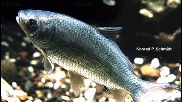 |
| Catostomidae |
Ictiobus niger
|
(Rafinesque, 1819) | Fr
| not established | Black buffalo (English), черный буффало (Russian) | | 123 cm TL male/unsexed | | This species is stocked in a number of regions in Russia (Ref. 26334). This has been introduced to areas within the country for aquaculture and stocking in open waters. However, it failed to establish self-sustaining populations (Ref. 45022). Was transferred to the Soviet Union in 1971. This species is stocked in a number of regions in Russia (Ref. 26334). Grown in some fish farms and sometimes occur in natural waters, mainly in Krasnodarskoye Reservoir, but without natural breeding (Ref. 75639). EurRus | 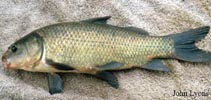 |
| Gobiidae |
Knipowitschia caucasica
|
(Berg, 1916) | Fr, Br
| native | бычок-бубырь (Russian) | | 5.00 cm TL male/unsexed | | Occurs in the lower reaches of the Volga (Ref. 26334). This has extended its range to several areas within the country where they have become locally established (Ref. 45022). EurRus | 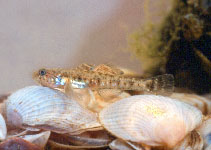 |
| Gobiidae |
Knipowitschia longecaudata
|
(Kessler, 1877) | Fr, Br
| native | длиннохвостый бычок Книповича (Russian) | | 5.00 cm TL male/unsexed ;3.50 cm TL female | | Occurs in the mouth of the Don, the Manych reservoirs and the lower Volga Delta (Ref. 26334). This has extended its range to several areas within the country where they have become locally established (Ref. 45022). EurRus | 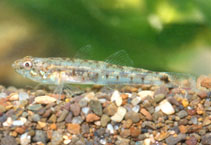 |
| Gobionidae |
Ladislavia taczanowskii
|
Dybowski, 1869 | Fr
| native | Vladislaviya (Russian), Ladislavia (English), Tachanovsky's gudgeon (English), ладиславия (Russian) | | 15.00 cm TL male/unsexed | 6 TL | Found in the Onon, Shilka, Ingoda and Argun rivers, and in the upper and middle reaches of the Amur as well as in Lake Khanka (Ref. 26334). Also Ref. 1441, 13397. nEurRus | 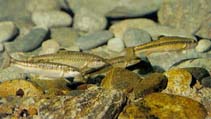 |
| Petromyzontidae |
Lampetra fluviatilis
|
(Linnaeus, 1758) | Fr, Br, M
| native | Минога речная (Russian), Evropeiskaya rechnaya minoga (Russian), River lamprey (English), Baltiyskaya minoga (Russian), минога речная (Russian), речная минога (Russian) | common (usually seen) | 50.00 cm TL male/unsexed | | Reported only from the Baltic Sea basin (the Neva, Narova and Luga rivers) (Ref. 26334). Also, from Neman (shared with Lithuania), Narva (shared with Estonia), and Lemenka rivers; and lakes Ladoga and Onega (Ref. 89241). EurRus | 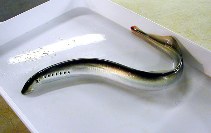 |
| Petromyzontidae |
Lampetra planeri
|
(Bloch, 1784) | Fr
| native | Evropeiskaya ruch'evaya minoga (Russian), Western brook lamprey (English), европейская ручьевая минога (Russian), минога ручьевая (Russian) | | 20.50 cm TL male/unsexed | | Known from rivers which empty into the Gulf of Finland and from the headwaters of the Volga (Ref. 26334). Also Ref. 89241. EurRus | 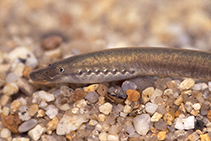 |
| Lateolabracidae |
Lateolabrax japonicus
|
(Cuvier, 1828) | Fr, Br, M
| native | Yaponskiy morskoi sudak (Russian), Japanese sea bass (English), судак дальневосточный морской (Russian) | scarce (very unlikely) | 102 cm TL male/unsexed | | Occurs in Peter the Great Bay; small individuals enters rivers (the Suifun River) (Ref. 26334, 27683). nEurRus | 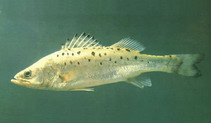 |
| Nemacheilidae |
Lefua costata
|
(Kessler, 1876) | Fr
| native | Vos'miusyi golets (Russian), Eight-whiskered stone loach (English), Eightbarbel loach (English), восьмиусый голец (Russian), голец восьмиусый (Russian), лефуа амурская (Russian) | | 9.80 cm TL male/unsexed | | Occurs in the Amur basin, Sakhalin and rivers flowing into Peter the Great Bay (Ref. 26334). Also found in Lake Khanka basin and Sungari River basin (Ref. 1441). This has been translocated to some areas within the country unintentionally where it has locally established self-sustaining populations (Ref. 45022). Also Ref. 37812. nEurRus | 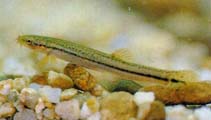 |
| Nemacheilidae |
Lefua pleskei
|
(Herzenstein, 1888) | Fr
| native | | | | | Type locality, Primorsky Kray: Lefu River [Ilistaya; a tributary of Lake Khanka] near Nikolajewka (Ref. 92804). nEurRus | No picture yet. |
| Cottidae |
Leocottus kesslerii
|
(Dybowski, 1874) | Fr
| native | Bauntovskaya peschanaya shirokolobka (Russian), Peschanaya shirokolobka (Russian), Baunt sand sculpin (English), Kessler's sculpin (English), Sand sculpin (English) | | 14.00 cm TL male/unsexed | 5.8 TL | Distributed along all the coasts of Baikal, entering the Upper Angara and Selenga rivers; also in the Gusinoe, Arakhlei and Tsandamskie lakes, as well as in the Baingol River in the Baikal basin (Ref. 26334). Type locality of C. kesslerii bauntovi, Baunt Lake, east of Lake Baical, Vitim R. basin, Buryatia (Ref. 26282). Also Ref. 42042. nEurRus |  |
| Centrarchidae |
Lepomis gibbosus
|
(Linnaeus, 1758) | Fr
| not established | Solechnaya ryba (Russian), Vysokotelyi solnechnyi okun' (Russian), Common sunfish (English), обыкновенная солнечная рыба (Russian), окунь солнечный (Russian), царек (Russian) | | 40.00 cm TL male/unsexed | | Occurrence in the country is probable by not reliably confirmed (Ref. 45022). Also Ref. 2058, 683. | 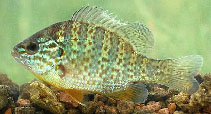 |
| Petromyzontidae |
Lethenteron camtschaticum
|
(Tilesius, 1811) | Fr, Br, M
| native | Tikhookeanskaja minoga (Russian), Arctic lamprey (English), Ledovitomorskaya minoga (Russian), Tikhookeanskaya minoga (Russian) | | 63.00 cm TL male/unsexed | | Known from the Pasvik River to the Ob, as well as in the Amur and in the rivers of the Maritime Territory, Sakhalin, and Kamchatka (Ref. 26334). Eastern area in Mainland Russia (Ref. 45563). White Sea Basin, Barents Sea Basin to the Pechora River, Arctic Ocean Basin and its rivers from the Ob’ (Kara Sea Basin) to the Kolyma (East Siberian Sea Basin), Anadyr territory, Utkholok River and its tributary Kolkavayam River (Kamchatka Peninsula), Iturup and Sakhalin islands, Amur and Suchan rivers (Ref. 89241). Into the 20th century, this was being consumed by humans (Ref. 117245). Also Ref. 27547, 27681, 50610, 55804, 43939, 96339. Also Ref. 37812, as Lampetra japonica. EurRus |  |
| Petromyzontidae |
Lethenteron kessleri
|
(Anikin, 1905) | Fr, B
| native | Sibirskaya minoga (Russian), Arctic brook lamprey (English), Siberian lamprey (English), сибирская минога (Russian) | | 26.00 cm TL male/unsexed | 21.5 TL | Known from the Pechora throughout Siberia to the Anadyr and Sakhalin (Ref. 26334). Found in Poronai and Tym' basins (Ref. 27681); Tom’, Kirgizka, and Yenisei rivers, Kolyma river basins (Ref. 89241). Specimens identified as Lethenteron kessleri from Arctic basin refer to Lethenteron reissneri (Ref. 59043). Also Ref. 37812. nEurRus | 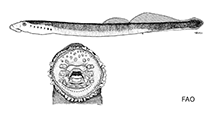 |
| Petromyzontidae |
Lethenteron mitsukurii
|
(Hatta, 1901) | Fr
| native | | | 17.40 cm TL male/unsexed | | Known from Kamchatka (Ref. 12323). nEurRus | No picture yet. |
| Petromyzontidae |
Lethenteron ninae
|
Naseka, Tuniyev & Renaud, 2009 | Fr
| native | | | 16.60 cm TL male/unsexed | | Black Sea Basin: Shakhe and Mzymta rivers, and Chakhtsutsyr Brook (Ref. 89241). EurRus | 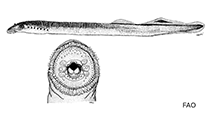 |
| Petromyzontidae |
Lethenteron reissneri
|
(Dybowski, 1869) | Fr
| native | Siberian lamprey (English), Dal'nevostochnaya ruch'evaya minoga (Russian) | | 26.00 cm TL male/unsexed | | Recorded from Umbra (Kola Peninsula), Severnaya Dvina, Mezen and upper Pechora drainages, eastward to Andyr drainage (Bering Sea), Amur drainage and Sakhalin Island (Ref. 59043); Western Kamchatka (Ref. 37812); Enadier river (Ref. 45563); Onon and Ingoda rivers (Amur River Basin); Tym’ River (Sakhalin Island) (Ref. 89241); and, Angara River system, Yenisei River drainage (Ref. 125650). Also Ref. 12269, 50610. EurRus |  |
| Leuciscidae |
Leucaspius delineatus
|
(Heckel, 1843) | Fr, Br
| native | Belaja rybka (Russian), Verkhovka (English), Beluschka (Russian), Obyknovennaya verkhovka (Russian), обыкновенная верховка (Russian), Bil (Russian), Busa (Russian), Elez (Russian), Klin (Russian), Maljawka (Russian), Maljuschka (Russian), Moltja (Russian), Rogatka (Russian), Samorodka (Russian), Werchoplawka (Russian) | occasional (usually not seen) | 9.00 cm SL male/unsexed | | Occurs in rivers running into the Baltic Sea, in the Northern Dvina and in the basins of the Caspian and Black seas and the Sea of Azov (Ref. 26334). Also Ref. 55804. EurRus | 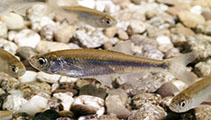 |
| Leuciscidae |
Leuciscus aspius
|
(Linnaeus, 1758) | Fr, Br
| native | Жерех обыкновенный (Russian), Zerekh (Russian), Zherekh obyknovennyi (Russian), Asp (English), обыкновенный жерех (Russian) | occasional (usually not seen) | 120 cm TL male/unsexed | | Distributed in the basins of the North, Baltic, Black, Caspian and Aral seas and the Sea of Azov (Ref. 26334). This has extended its range to several areas within the country where they have become locally established (Ref. 45022). Also Ref. 556. EurRus |  |
| Leuciscidae |
Leuciscus baicalensis
|
(Dybowski, 1874) | Fr
| native | Eletz sibirsky (Russian), Chebak (Russian) | | 16.00 cm SL male/unsexed | 11 SL | Type locality, all rivers of the Baikal Lake system, Russia (Ref. 33021). nEurRus | No picture yet. |
| Leuciscidae |
Leuciscus danilewskii
|
(Kessler, 1877) | Fr
| native | Danilevskii's dace (English), Danilewski's dace (English), елец Данилевского (Russian) | | 24.00 cm SL male/unsexed | | Occurs in the Don River and its tributaries (Ref. 26334). Also Ref. 59043. EurRus | 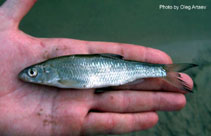 |
| Leuciscidae |
Leuciscus idus
|
(Linnaeus, 1758) | Fr, Br, Fi
| native | Язь (Russian), Yaz' (Russian), Ide (English), Orfe (English), подъязык (Russian), язь (Russian), язь золотой (Russian) | common (usually seen) | 85.00 cm SL male/unsexed | 24 FL | Occurs in the basin of the Arctic Ocean from the Ponoi and Varzuga to the Lena, in rivers of the Black Sea basin from the Dnieper to Kuban, and in the northern part of the Caspian basin (the Volga and Ural rivers) (Ref. 26334). This has been translocated to areas within the country for aquaculture and stocking in open waters where it has tentatively established self-sustaining populations, however has been extirpated in its non native distribution (Ref. 45022). EurRus |  |
| Leuciscidae |
Leuciscus leuciscus
|
(Linnaeus, 1758) | Fr, Br
| native | Elets obyknovennyi (Russian), Dace (English), елец (Russian), обыкновенный елец (Russian) | common (usually seen) | 40.00 cm TL male/unsexed | | Occurs in rivers running into the Baltic Sea, lakes Ladoga and Onega, the European region of the basin of the Arctic Ocean from the Varzuga and Kem to the Pechora, rivers of the Black Sea basin from the Dnieper to Mius, the Volgaand Ural rivers, and in the Asian region of the Arctic Ocean from the Ob to Kolyma (Ref. 26334). EurRus |  |
| Leuciscidae |
Leuciscus waleckii
|
(Dybowski, 1869) | Fr, Br
| native | Amurskii yaz' (Russian), Amur ide (English) | | 37.00 cm TL male/unsexed | 14.5 TL | Occurs in Lake Khanka drainage area (Amur river basin) (Ref. 13397), Sakhalin (Ref. 37812). Found also in the basins of the Poronai and Tym' Rivers (Ref. 27681). This has been translocated to areas within the country for unknown reasons. It has now locally established self-sustaining populations (Ref. 45022). Also Ref. 26334. nEurRus | 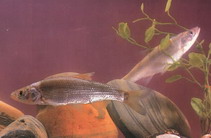 |
| Cottidae |
Limnocottus bergianus
|
Taliev, 1935 | Fr
| endemic | плоская широколобка (Russian) | | 22.50 cm TL male/unsexed | | Found only in Lake Baikal (Ref. 26334). nEurRus |  |
| Cottidae |
Limnocottus godlewskii
|
(Dybowski, 1874) | Fr
| endemic | крапчатая широколобка (Russian) | | 19.00 cm TL male/unsexed | | Found only in Lake Baikal (Ref. 26334). nEurRus |  |
| Cottidae |
Limnocottus griseus
|
(Taliev, 1955) | Fr
| endemic | темная широколобка (Russian) | | | | Known only from Lake Baikal (Ref. 26334). nEurRus |  |
| Cottidae |
Limnocottus pallidus
|
Taliev, 1948 | Fr
| endemic | узкая широколобка (Russian) | | 13.10 cm SL male/unsexed ;14.60 cm SL female | 11.5 TL | Known only from Lake Baikal (Ref. 26334). nEurRus |  |
| Pleuronectidae |
Liopsetta glacialis
|
(Pallas, 1776) | Fr, Br, M
| native | Polyarnaya kambala (Russian), Arctic flounder (English), Christmas flounder (English), Eelback flounder (English), камбала полярная (Russian), полярная камбала (Russian) | | 44.00 cm TL male/unsexed | | Occurs in the White Sea (Ref. 2058). Enters the Northern Dvina and Vyg, rivers of the Kanin Peninsula, and many large Siberian rivers (Ob, Enisei, Lena, Yana and others) (Ref. 26334). Found in Kamchatka (Ref. 37812). Also Ref. 123027. EurRus | 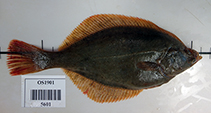 |























































































